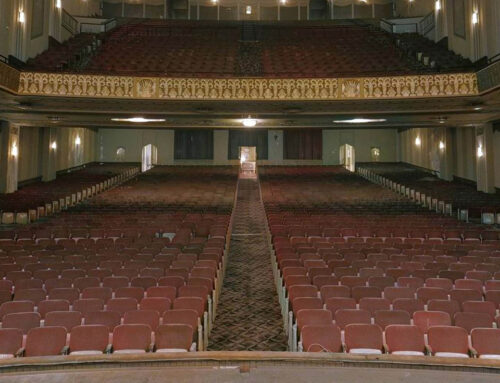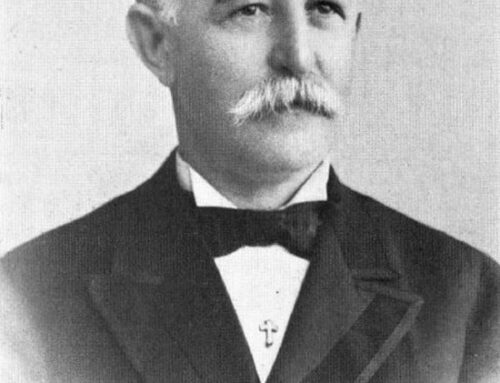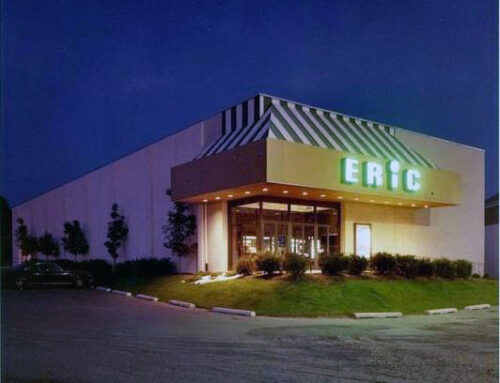In 1871 the West Reading Market House was erected on the south side of Penn below Fourth Street, extending in the rear to Cherry Street. The directors of the Market House Company, headed by John Kissinger, president, and George M. Ermentrout, secretary and treasurer, were Reuben E. Addams, Charles S. Birch, John McKnight, Arnold Mellert, John F. Orth, John S. Pierson and A. W. Potteiger. Soon after the completion of the market house, the directors decided to add an opera house to the front of the building above the market. It was completed at a cost of forty thousand dollars and opened in September 1873.
Below: 300 block of Penn Street, south side, looking westward, 1890s.


The Opera House was an upstairs theatre. The main entrance was reached by a wide stairway, enclosed by massive wooden doors from the porticoed pavement. The auditorium seated about one thousand persons. The decorations were executed by Frederick Spang, Reading artist. Briefly, the front of the parquet circle was panelled with life-like portraits of Rubinstein, Miss Neilson, Jenny Lind, Clara Louise Kellogg, Meyerbeer, and other celebrities. Recessed above the proscenium was the head of Apollo and on the ceiling were portraits of Edwin Forrest as “Macbeth,” Fanny Kemble, Mozart and Beethoven. The stage had a depth of thirty-four feet with an apron of twelve feet. The players reached back stage from the market house by climbing a spiral stairway.
George M. Ermentrout managed the theatre for the first season. Then George M. Miller, Charles S. Birch and G. M. Ermentrout leased it, after which George M. Miller became the resident manager. I. J. Steel was connected with the staff, and several years later, was succeeded by his son, Harry Steel. In 1876 Mr. Miller acquired the theatre, continuing as manager until 1905. Through the season of 1878-79, Mr. Miller and Mr. Mishler co-managed both the Opera House and the Academy of Music. Will Koch was the leader of the Orchestra.
Complete arrangements were made for the opening on Wednesday, September 10, 1873. The diagram for reservations was at Ringel and Richards Book Store, 547 Penn Street. Arrangements had been completed for the opening, when announcement was made of an unavoidable postponement until Thursday, September 11, because a portion of the scenery had not arrived in time to complete the stage sets for the production. However, the theatre did open September 11, with the spectacular production “The Sea of Ice” with Caroline Richings, J. T. Fannin, Wm. Davidge, Jr., and Maggie Harold. The Ringgold Band played a concert program on the portico between 7 and 8 o’clock, and the opening was “a grand success.” The first season was especially noteworthy. September 29, Harriet Beecher Stowe gave readings of “Uncle Tom’s Cabin;” October 6, Madame Janauschek played “Mary Stuart;” November 10, Mr. and Mrs. E. L. Davenport appeared in “School for Scandal;” December 20, John E. Owens starred in his great success, “Victims,” and on March 25, 1874, Mrs. John Drew and the comedian, Sam Hemple, co-starred in “A Mother’s Love.” On the same night, her son, John Drew, appeared in Jos. Jefferson]s playlet, “Lend Me Five Shillings.” J. B. Roberts, popular Shakesperean actor, appeared April 11, in “Richard III,” and later in “The Merchant of Venice” and “Hamlet;” and on November 12, J. K. Emmett was here in “Fritz, Our American Cousin.” During the period of operation, the Opera House performed more than 1,500 dramatic and musical attractions. The theatre would undergo various name changes, including “The Family Theatre,” C.G. Keeney’s “Grand Opera House,” and “The Grand Theatre,” before the market house was removed and the building remodeled in 1921 to become the Capitol Theatre. The building was razed in January, 1975. The site is now a parking lot directly opposite the Reading Eagle building.






Leave A Comment